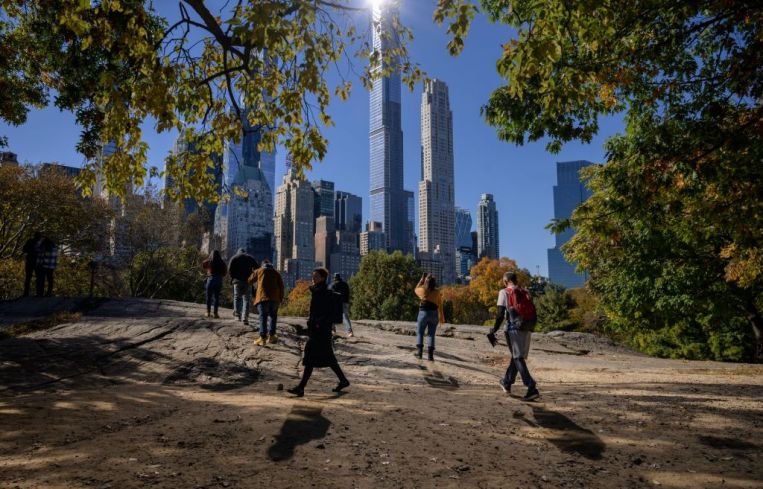Parks Boost NYC Property Values by $15B: Report
By Celia Young March 21, 2022 12:41 pm
reprints
New York City’s more than 30,000 acres of parks increase the Big Apple’s residential property values by about $15.2 billion, according to a report by the Trust for Public Land, a pro-park nonprofit organization.
Using property tax assessment data from the New York City Department of Finance, the nonprofit estimated that a residential home’s proximity to a park boosted its value and increased the amount of property tax paid by about $101 million.
“New Yorkers, they need to get out — partly to make the city livable” Carter Strickland, New York state director for the trust, said in a statement. “You can’t have a great city without great parks. We put a number to it, but really that feeling is what’s important. People love their parks.”
The nonprofit looked at about 400,000 homes that had enough property tax data to evaluate, Strickland said. It estimated that about 5 percent of the value of those homes came from being within 500 feet of a local park — which Strickland said is a conservative figure because its previous research found increases of even 20 percent. The total market value of those properties was about $303 billion, according to the report.
Central Park, in particular, has historically driven up property values as the New York Economic Development Corporation found in 2014 that condominium units with views of Central Park sold for 20 to 70 percent more than units with views of the city. But because not every park is Central Park, Strickland said the trust used a lower estimation of what percentage of a property’s value came from its proximity to a park.
The city’s parks are visited about 527 million times per year and also provide recreational activities, drive up tourism, lower health care costs, and absorb stormwater, limiting repair costs to the city’s drainage system, according to the study.
“Our expansive and varied parks system is one of the most valuable public assets New Yorkers have access to — it’s where they connect with the community, stay fit and explore the wonders of nature,” New York City Department of Parks and Recreation Commissioner Sue Donoghue said in a statement.
Outdoor space has been increasingly valued by residents of New York City during the pandemic, which forced many residents to remain inside their homes out of fear of catching the deadly virus in the early days of the pandemic. Outdoor terraces in office buildings have grown in popularity and has helped buoy leasing at office campuses that have it, like Industry City in Sunset Park, Brooklyn.
But the city’s green space is not equally distributed among its residents. The study found that communities of color have more than 33 percent less park space within a 10-minute walk per person compared to white neighborhoods. It also found that the same discrepancy was true for low-income areas, which have more than 21 percent less park space per person within a 10-minute walk.
And new parks — like the High Line — can drive up property values enough to make neighborhoods unaffordable for current residents, according to the study. That can be avoided if the area creates an affordable housing component before a new park is built, Strickland said.
Celia Young can be reached at cyoung@commercialobserver.com.



